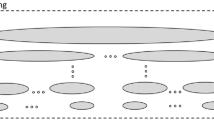Abstract
The behavior of an Internetware system, which is running in a dymamic and open environment, is likely to deviate from its original requirements specification. In this paper, we propose an interaction based requirements monitoring approach for Internetware. Firstly the Internetware requirements are transformed into an environment based Internetware specification in terms of expected interactions between the Internetware system and its environment. Then we monitor the running Internetware system, collect the Internetware system behaviors in terms of actual interactions between the Internetware system and its environment, and compare the Internetware system behaviors with its specification. Finally a monitoring report is given. As environment change is more predictable than requirement change, our approach could handle environment changes and Internetware system evolution by updating its environment. A framework of the interaction based requirements monitoring is presented. Furthermore, a corresponding monitor is designed. At last, a case study is carried on to illustrate the feasibility of our approach.
Similar content being viewed by others
References
Yang F, Mei H, Lu J, et al. Some discussion on the development of software technology (in Chinese). Acta Electron Sinica, 2003, 26: 1104–1115
Lu L, Ma X, Tao X, et al. The research and development on the Internetware (in Chinese). Sci China Ser E-Inf Sci, 2006, 36: 1037–1080
Schroeder B. On-line monitoring: a tutorial. IEEE Comput, 1995, 28: 72–78
Robinson W. Monitoring software requirements using instrumented code. In: Proceedings of the 35th Annual Hawaii International Conference on System Sciences. Washington DC: IEEE Press, 2002. 3967–3976
Robinson W. A requirements monitoring framework for enterprise systems. Requir Eng J, 2006, 11: 7–41
Peters D, Parnas D. Requirements-based monitors for real-time systems. IEEE Trans Softw Eng, 2002, 28: 146–158
Chen X, Jin Z, Yin B. An approach for capturing software requirements from interactive scenarios (in Chinese). Chinese J Comput, 2011, 34: 329–341
Jackson M. The meaning of requirements. Ann Softw Eng, 1997, 3: 5–21
Zave P, Jackson M. Four dark corners of requirements engineering. ACM Trans Softw Eng Methodol, 1997, 6: 1–30
Jackson M. Problem frames: analyzing and structuring software development problems. London: Addison-Wesley, 2001
Lynch N, Tuttle M. Hierarchical correctness proofs for distributed algorithms. Dissertation for the Master Degree. Massachusetts: Massachusetts Institute of Technology, 1987
Fickas S, Feather M. Requirements monitoring in dynamic environments. In: Proceedings of Second IEEE International Symposium on Requirements Engineering, York, 1995. 140–147
Feather M, Fickas S, Lamsweerde A, et al. Reconciling system requirements and runtime behavior. In: Proceedings of 9th International Workshop on Software Specification and Design, Mie Prefecture, 1998. 50–59
Wang Y, McIlraith S, Yu Y, et al. An automated approach for monitoring and diagnosing requirements. In: Proceedings of the 22nd IEEE/ACM International Conference Automated Software Engineering, Atlanta, 2007. 3–35
Robinson W. Implementing rule-based monitors within a framework for continuous requirements monitoring. In: Proceedings of the 38th Annual Hawaii International Conference on System Sciences, Hawaii, 2005. 188a
Lamsweerde A, Letier E. Handling obstacles in goal-oriented requirements engineering. IEEE Trans Softw Eng, 2000, 26: 978–1005
Robinson W, Purao S. Specifying and monitoring interactions and commitments in open business processes. IEEE Softw, 2009, 26: 72–79
Robinson W, Akhlaghi A, Deng T, et al. Discovery and diagnosis of behavioral transitions in patient event streams. ACM Trans Manage Inform Syst, 2012, 3: 4
Winbladh K, Alspaugh T, Ziv H, et al. An automated approach for goal-driven, specification-based testing. In: Proceedings of the 21st IEEE/ACM International Conference on Automated Software Engineering, Tokyo, 2006. 289–292
Fu L, Peng X, Zhao W. An agent-based requirements monitoring framework for Internetware (in Chinese). J Comput Res Dev, 2013, 50: 1055–1065
Robinson W. Extended OCL for goal monitoring. Electron Commun EASST, 2008, 9: 1–12
Peters D. Deriving Real-time monitors from system requirements documentation. Dissertation for the Doctoral Degree. Hamilton: McMaster University, 2000. 35–55
Zhou X. A goal-oriented Instrumentation approach for monitoring requirements. Dissertation for the Master Degree. Toronto: University of Toronto, 2008. 23–44
Dingwall-Smith A. Run-time monitoring of goal-oriented requirements specifications. Dissertation for the Doctoral Degree. London: University of London, 2006. 52–67
Salifu M, Yu Y, Nuseibeh B. Specifying monitoring and switching problems in context. In: Proceedings of the 15th IEEE International Requirements Engineering Conference, Annapolis, 2007. 211–220
Wang P, Jin Z, Liu H. Functional description and discovery for internetware entity (in Chinese). Sci China Ser F-Inf Sci, 2009, 39: 1271–1287
Author information
Authors and Affiliations
Corresponding author
Rights and permissions
About this article
Cite this article
Chen, X., Liu, J. & Liu, Z. Requirements monitoring for Internetware: an interaction based approach. Sci. China Inf. Sci. 56, 1–15 (2013). https://doi.org/10.1007/s11432-013-4909-3
Received:
Accepted:
Published:
Issue Date:
DOI: https://doi.org/10.1007/s11432-013-4909-3




